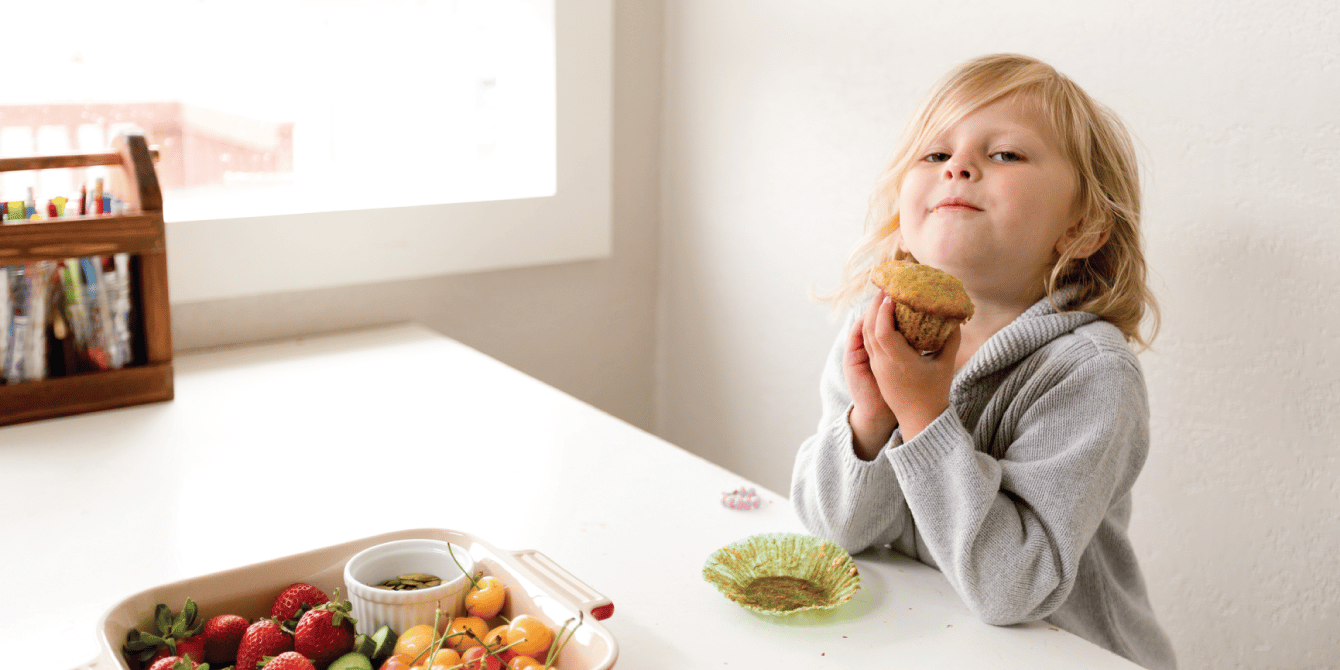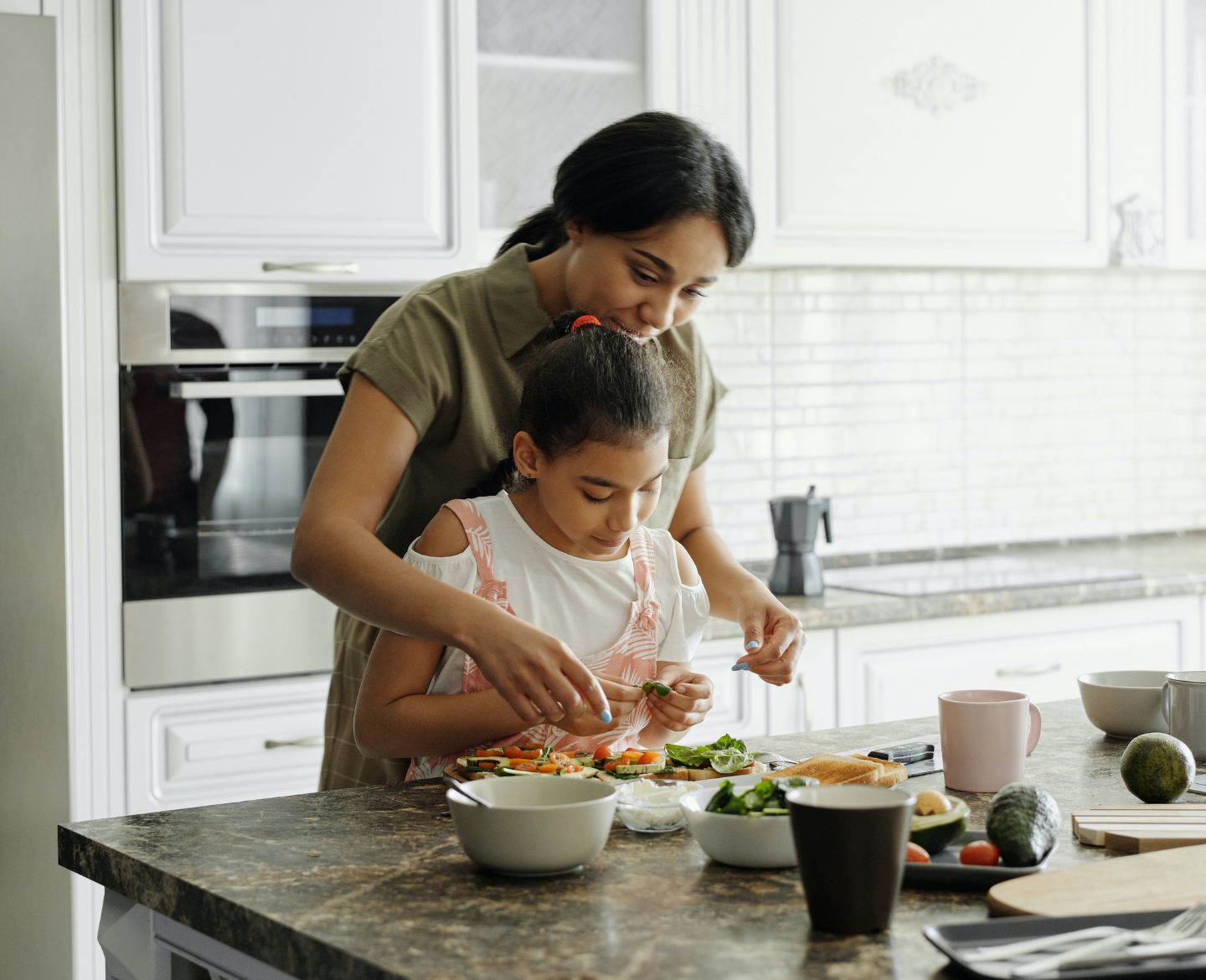These 6 words transformed my picky eaters
No picky eater stands a chance against "You don't have to eat it."

Jennifer Bogle/Stocksy
My third grader dragged his feet into the kitchen this morning and took one look at breakfast. “Nope. I’m not eating that,” he said. Then he stormed back to his room. In the past, I would’ve gone after my son. I would have at least tried to cajole him into trying a bite. How does he even know he won’t like breakfast? Which by the way, was extra thick and creamy vanilla Greek yogurt topped with granola and blueberries so fresh and juicy they practically burst when you look at them. It’s not a controversial meal. My three daughters ate, and enjoyed, the same breakfast. So why all the drama?
Because he’s nine.
Because he’s tired.
Because his brain is literally developing as I type.
It’s not because the food is gross. It’s not because I’m a bad mom. What my child eats is just up to him.
When I finally learned to stop taking my kids’ behavior so personally, a whole new world opened up. A world full of peace. I mean, mostly. I wish I could triumphantly proclaim that I don’t stress out anymore, but parenting is still exhausting sometimes. Of course it is! Sometimes I wonder which phase will do me in for good—Bickering? Back talking? Leaving underwear and stretch pants inside out on the floor? All strong contenders. But food? Nope, I know that food will not be one of them. Because now I have boundaries.
Have you heard the term “division of responsibility”? It’s originally from the Ellyn Satter Institute and it’ll change your life as much as it changed mine.
Here’s how it works: Parents have a job, that’s to provide fresh food. Kids decide to eat it, and how much. That’s their job. You do your job, kids do theirs.
Before my son flew out of the kitchen this morning I said the magic words and shrugged. “You don’t have to eat it.” Because he doesn’t. This is breakfast today. It’s fresh, wholesome and appropriate for fueling up before school. But he doesn’t have to eat it. It’s my very favorite breakfast. But he doesn’t have to eat it. It’s way more nutritious than cereal, plus I paid extra for those berries. But he doesn’t have to eat it. That’s his job, not mine.
There’s nothing quite like trying to feed kids. Part of me craves it. I yearn to produce glorious meals on crisp white platters for my whole family to “ooh” and “ahh” over. To sit around the table laughing and passing food from one family member to another. The problem is…um, my family. Unfortunately, my four kids have their own taste buds and with those come their own likes and dislikes. And don’t get me started on my husband.
But that doesn’t mean moms have to become short order cooks. Who wants to make toast for one kid, oatmeal with just the right amount of brown sugar and scrambled eggs with ONLY cheddar cheese for another? That’s no way to start the day for you, and no way to start a life, for kids. Having an adaptable attitude, not to mention gratitude, is an important life skill.
Feeding kids doesn’t have to be so hard.
You are the parent and that means you are in charge of what’s on the menu. Your kids decide whether to eat and how much.
This sounds simple but there’s more to pulling it off. The most important part of setting boundaries around meals sounds even simpler: Keep your cool. You have to be firm, but calm. Think about how teachers guide all those kids in one classroom. They don’t sheepishly ask twenty little rascals to start doing subtraction. Just if you want to though. Would you guys prefer to play outside? I’ll bring lemonade! No, teachers guide kids through what’s expected, and their roles are really clear.
Will your kids like this change? Probably not, at first. But keep going. Even if there are tears, tantrums and meltdowns over mac and cheese. Make this a new routine and you’ll be amazed. Hold tight to your boundaries and stay true to your leadership position.
Here’s an example of how it might go, along with the subtext:
Me: Here’s your breakfast today. It’s extra creamy vanilla yogurt with granola and juicy blueberries sprinkled on top (This is a great meal!)
Child: Oh-oh! I don’t want THAT. Can’t we have toast with jam? (I want what I want.)
Me: Toast is yummy too, and we can have it for a snack later today. (I hear you.)
Child: Okay but I still don’t want this. (I really want what I want.)
Me: Well, it’s up to you. This is a yummy breakfast that’ll help your body feel good all morning but you don’t have to eat it. (It’s up to you.)
That’s it! I don’t give my kids anything else to eat (anymore) and I don’t have a meltdown of my own (most of the time). Staying calm is half the battle, maybe more, but I can’t emphasize enough how much it pays off. Even through tantrums.
And what if your child has a full meltdown in response? That’s okay! My kids have slithered so far down their seats that I wondered if we’d need to make a bed for them under the table. Enjoy your new space, guys! Kids are allowed to have feelings, even big ones, and it’s wise to expect them. Anticipating pushback has been another gamechanger. Being prepared, staying calm, and having something to say—then knowing when to stop talking—gave me confidence, and you can get it too.
The more boundaries you set, without pressuring kids to eat, the easier this new routine will be. The parent decides the menu, kids decide when and how much to eat. Don’t forget the first rule of cooking for kids: we don’t negotiate with knee-high critics. No power struggles, no substitutions. One meal for everyone. Everyone picks what they want to eat.
Now let me clarify. When I say ONE MEAL, I’m not talking about a steaming pot of coq au vin. We aren’t trying to torture people with mystery ingredients. (Crosses “fresh rooster” off of the grocery list.) I always make sure there is something everyone can identify, and enjoy, in the mix, even if it’s not “dinner food”. A bowl of sliced apples on the table can make all the difference. Ditto for a baguette, crunchy baby carrots or chunks of cheese. Meals are supposed to be enjoyable. There’s no reason for everyone to associate eating together with stress. Not when we have other options.
So guess who ate his yogurt after all? Yep, he did. I never said anything else about it. I told my son our timeframe (setting another boundary) and went about getting the rest of our family ready for the day (staying calm and letting go, even though I worried about him). He decided to come back and give it a whirl. I provided fresh food and he had to decide whether to eat it.
In the end, it’s our kids’ responsibility to decide what to eat. Ours is to make the food, stay calm and release our grip on control. Because it was never really ours in the first place.


